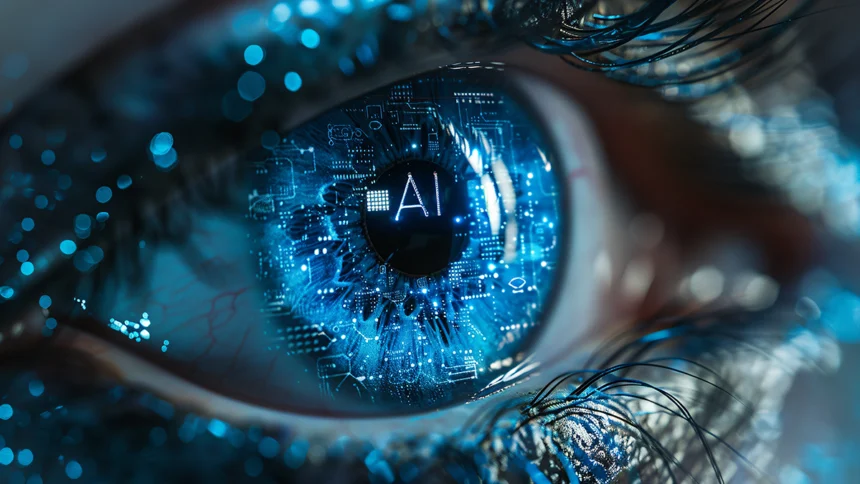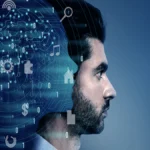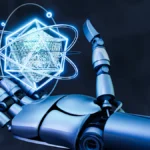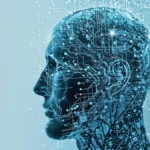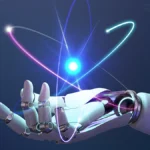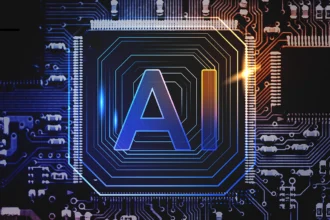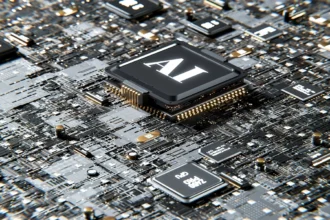Have you ever wondered how artificial intelligence (AI) is reshaping the landscape of creativity? In an era where technology infiltrates every aspect of our lives, the art world stands as one of the most fascinating domains undergoing transformation. From painting to music, AI is driving an art revolution that challenges our traditional notions of artistic expression. How is this technological wave influencing creativity and shaping new art trends? In this article, we’ll explore the profound impact of AI on the art world, examining how it enhances creativity, influences digital art, and transforms artistic expression.
The Intersection of AI and Art
Artificial intelligence is no longer just a buzzword; it has become a fundamental component of modern artistic practices. The fusion of technology in art has created a new ecosystem where machine learning algorithms, data analysis, and creative software collaborate with human artists to produce innovative works. This intersection offers exciting possibilities, allowing artists to push boundaries and explore uncharted territories in their creative journeys.
Understanding AI in the Context of Art
AI in art refers to the use of advanced algorithms and computational techniques to create, analyze, and enhance artistic works. This technology encompasses various forms, including:
- Generative Art: Algorithms generate unique visual pieces based on specific parameters set by the artist.
- Style Transfer: AI can apply the style of one image to another, merging different artistic influences.
- Interactive Installations: AI-driven installations respond to audience interactions, creating a dynamic art experience.
- Music Composition: AI can compose original music, blending genres and styles seamlessly.
These innovative approaches are transforming traditional practices, paving the way for a new era of artistic expression.
How AI Enhances Creativity
1. Expanding Artistic Possibilities
One of the most significant contributions of AI to the art world is its ability to expand creative possibilities. Artists can now leverage machine learning algorithms to generate ideas, explore different styles, and even create entire pieces. This technological partnership enhances creativity by allowing artists to experiment without the limitations of traditional methods.
Table 1: AI Tools Enhancing Creativity
| Tool | Description | Use Case |
|---|---|---|
| DALL-E | Generates images from textual descriptions | Concept art and visual brainstorming |
| DeepArt | Applies artistic styles to photographs | Personalizing photographs |
| Amper Music | AI-generated music compositions | Soundtracks for videos and games |
| Runway ML | A platform for creating videos and images using AI | Experimental video projects |
2. Redefining Artistic Expression
AI is also redefining what it means to be an artist. By incorporating technology into their practice, artists can explore new forms of expression. For example, generative art allows for the creation of visually stunning pieces that may not be possible through traditional means. This shift prompts questions about authorship and originality, challenging our understanding of creativity.
3. Collaborations Between Humans and Machines
The collaboration between humans and machines fosters a unique creative environment. Artists can use AI as a tool, allowing them to focus on their concepts while the technology handles repetitive tasks. This partnership not only increases efficiency but also encourages artists to think differently about their work.
4. Embracing Data as Inspiration
Incorporating data into the creative process is another fascinating aspect of AI in art. Artists can analyze trends, social media data, or cultural movements to inspire their work. This data-driven approach enables artists to create pieces that resonate with contemporary issues, making their art more relevant and impactful.
Exploring Digital Art Trends Driven by AI
As AI continues to evolve, it shapes the future of digital art in remarkable ways. Let’s delve into some of the key art trends that have emerged as a result of AI integration.
Trend 1: Generative Art
Generative art is at the forefront of the AI art revolution. Using algorithms and data, artists can create unique visual compositions that push the boundaries of creativity. This trend allows for endless possibilities, as each generated piece is distinct and often surprising.
Trend 2: Interactive Art Installations
Interactive art installations are gaining popularity, with AI playing a crucial role in enhancing audience engagement. These installations respond to viewers’ movements or emotions, creating a dynamic experience that blurs the lines between artist and audience.
Trend 3: AI-Generated Music
AI is making waves in the music industry as well. Algorithms can compose original music, allowing musicians to explore new genres and styles. This innovation challenges traditional music composition, inviting collaborations between humans and machines.
Trend 4: NFT Art
The rise of Non-Fungible Tokens (NFTs) has transformed how artists share and sell their work. AI-generated art is increasingly featured in the NFT market, allowing artists to monetize their digital creations in innovative ways. The combination of AI and blockchain technology has opened new avenues for artistic expression and ownership.
The Role of Machine Learning in Art Creation
Machine learning, a subset of AI, plays a pivotal role in the art revolution. By analyzing vast amounts of data, machine learning algorithms can identify patterns, styles, and even emotional tones in artworks. Here’s how machine learning is impacting the art world:
1. Analyzing Art Styles
Machine learning algorithms can analyze historical artworks, identifying the unique styles of different artists. This analysis can inform contemporary artists about various techniques, helping them to develop their own distinctive styles.
2. Predicting Trends
Machine learning can also predict emerging art trends by analyzing social media activity, exhibition attendance, and other cultural indicators. Artists and galleries can leverage this information to stay ahead of the curve and create relevant works.
3. Automating Creative Processes
By automating repetitive tasks, machine learning allows artists to focus on the more conceptual aspects of their work. For instance, AI can assist in color selection, composition, and even preliminary sketches, streamlining the creative process.
The Ethical Considerations of AI in Art
As with any technological advancement, the rise of AI in the art world brings ethical considerations. Here are some of the key issues to ponder:
1. Ownership and Authorship
With AI-generated art, questions arise about ownership and authorship. If an artwork is created by an algorithm, who holds the rights? This debate challenges traditional notions of artistic creation and intellectual property.
2. Impact on Employment
The integration of AI in the art world may lead to concerns about job displacement. As machines take on tasks traditionally performed by humans, artists and designers must adapt to a changing landscape. However, many argue that AI will not replace artists but rather augment their creativity.
3. Authenticity and Value
AI-generated art often blurs the lines between original and reproduced works. As collectors and galleries navigate this new terrain, the concepts of authenticity and value in art are evolving. Understanding these changes is crucial for artists and buyers alike.
Frequently Asked Questions (FAQs)
What is generative art, and how is it created using AI?
Generative art is a form of art created using algorithms and computational processes. Artists set parameters, and the AI generates unique visual compositions based on those rules. This approach allows for endless creative possibilities.
Can AI create music that resonates with human emotions?
Yes, AI can analyze patterns in music to create compositions that evoke specific emotions. By understanding the elements that make music impactful, AI can generate original pieces that connect with listeners.
What are NFTs, and how do they relate to AI-generated art?
Non-Fungible Tokens (NFTs) are digital assets that represent ownership of unique items or works of art. AI-generated art is increasingly featured in the NFT market, allowing artists to monetize their digital creations and reach a wider audience.
Is AI art considered “real” art?
AI art is considered a legitimate form of artistic expression. While it challenges traditional notions of creativity, the collaboration between human artists and AI algorithms results in innovative works that push boundaries and explore new ideas.
How can artists incorporate AI into their creative processes?
Artists can incorporate AI by experimenting with generative art tools, using algorithms for inspiration, and exploring AI-driven software for music and visuals. This integration allows artists to enhance their creativity and explore new possibilities.
READ MORE : AI for Thinking Humans – A Practical Guide to AI Use
Conclusion
The impact of AI on the art world is profound and multifaceted, driving an art revolution that is reshaping our understanding of creativity and artistic expression. As technology continues to evolve, artists and creators will have unprecedented opportunities to explore new frontiers in their work. By embracing AI as a collaborative tool, the art world can unlock a wealth of possibilities that were once unimaginable.
Thank you for reading! If you found this article insightful, we invite you to join our community through social media, push notifications, and newsletters to receive instant updates on the latest trends and innovations in the art world. Stay connected and be part of this exciting journey into the future of creativity.


